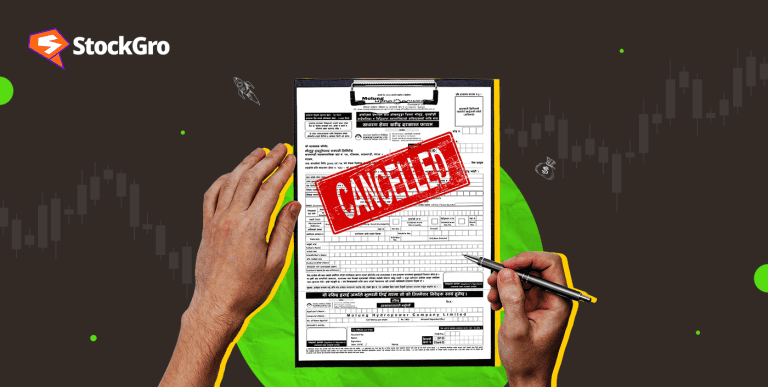
Research on the Indian market found that IPOs with high subscription rates had a mean underpricing of 58.25%. In comparison, those with low subscription rates averaged 5.99%, indicating investor demand significantly influences underpricing levels.
In this blog we examine IPO underpricing to clarify the concept behind it and how it influences all stock market players. Continue reading to learn more about IPO underpricing and how it impacts you as an investor.
Also Read: An introduction to Turtle trading strategies and how they work
What is an underpriced IPO?
Underpricing is the scenario whereby the firm’s IPO share price is set below its real market worth. It can happen for two reasons: either the underwriter misprises the share price, or the IPO is priced cautiously to appeal to investors.
Companies in crisis can employ underpricing to make their shares appealing. The corporation maintains the share price below its actual value. Still, the stock value rises as the market heals itself following the first trading day.
Information asymmetry, judicial cases, or a tactic to increase demand by a lower price can all lead to the underpricing of IPO shares.
Formula to calculate underpriced IPO shares
The underpricing Percentage of IPO shares can be calculated using the formula:
Percentage of Underpricing = [(Closing Price – Offer Price) / Offer Price] * 100
Where:
- Closing Price: The price that is present when the first trading session ends.
- Offer Price: Initial price of the IPO shares during the offering.
Since underpricing is expressed as a percentage, the result is multiplied by 100.
Example of IPO Underpricing
Imagine a company issuing its IPO shares at ₹80, the offer price. The shares settled at ₹120 at the conclusion of the first trading day.
Using the formula:
Underpricing Percentage = [(120 – 80) / 80] * 100
= (40 / 80) * 100
= 50%
Therefore, the IPO shares were underpriced by 50%.
Errors in offering price computation usually lead to underpricing of an IPO. Numerous quantitative and qualitative factors also influence the IPO price. The quantitative elements constitute the company’s financial records, predicted and actual figures, and stated cash flow.
These elements allow companies enrolled on the stock exchange to either list shares at the original price or a reduced price. The prices of the equities start to climb once they are on display. Therefore, the underpriced stocks scenario might not endure for a longer duration; before the conclusion of the first trading day, the company’s stocks will change to their real worth.
Also Read: How Robo orders and trading bots can boost intraday
Underpricing reasons
Let us look at the reasons for underpricing:
#1 – Increasing demand for a stock
Companies underprice IPOs mainly to boost stock demand. Several IPOs are issued every week, and demand varies as well. Companies strive for uniqueness; cheap stocks help to meet that goal.
#2 – Publicity
There are instances when it is just publicity. Reporters and speculators are more likely to cover low-price equities, acting as free advertising. Consequently, on the first day, the price increases sharply.
#3 – Motivating stakeholders to invest in the company
Only when investors are ready to take calculated risks in the business will demand increase be conceivable. In other words, investors ought to be driven to embrace uncertainty. When investors sense the possibility of exponential development, they expose risks. Likewise, factors appealing to investors are strong cash flow, profitability, income, and future mergers.
#4 – Legal issues
Sometimes, companies are compelled to underprice their stocks, hence underlining disasters. One often-used example is a legal matter. The volatility of capital markets means that, regardless of the specifics, market guesses and rumors have great influence. Should a corporation go through court processes, its reputation may suffer (at least momentarily). Investors with a strong taste for risk will still buy the underpriced stock. For instance, Facebook was sued in 2012; in reaction, Facebook underpriced its stocks.
#5 – Lack of IPO information available
Investors can lack specific company understanding. Generally speaking, informed purchasers trade long-term. Uninformed investors lose money bidding haphazardly. The latter stop bidding once they lose money. Companies thus lower the danger of ignorant investors by selling underpriced equities. On the other hand, underpriced and overpriced equities can divert potential buyers.
Advantages and disadvantages of underpricing
Given below is a comparison between the main advantages and disadvantages of underpricing
| Advantages | Disadvantages |
| Helps the company raise capital efficiently. | Involves numerous regulatory disclosures and formalities. |
| Provides existing investors with a seamless opportunity to exit. | The IPO process can incur significant costs, such as underwriting fees. |
| Encourages higher demand and trading activity for the company’s shares. | May lead to less control as influence is gained by new parties. |
| Attracts sufficient investor interest, potentially lowering the company’s cost of capital. | Puts extra pressure on the management team to meet heightened investor expectations. |
Also Read: Understanding the difference between Spin-offs and Split-offs
Conclusion
Underpricing in IPOs is a complicated phenomenon that has consequences for businesses and investors. Understanding its causes is vital; one should carefully weigh the advantages and disadvantages.
While investors should approach IPOs carefully and with a long-term view, companies should control underpricing intentionally. Success in an atmosphere of always shifting financial conditions depends on being educated and flexible.
FAQs
1. What is an example of underpricing in an IPO?
LinkedIn’s 2011 IPO is a prime illustration of underpricing. Originally selling shares at $45 per, by the end of the first trading session, the price had increased to $94.25. The stock was underpriced by 109%. Underpricing of this kind emphasizes the habit of selling shares below their market value to generate buzz and increase demand.
2. What are the reasons for IPO underpricing?
IPO underpricing has numerous causes. First, providing a “discounted” price that guarantees the IPO is completely subscribed helps create great demand from investors. Second, underpricing guarantees that the issuing business draws media coverage and trading activity and generates a good attitude in the market. It also lowers hazards for underwriters since a lower price indicates less possibility of unsold shares. Finally, businesses could purposefully underprice IPOs to honor first investors and create market goodwill, thus strengthening long-term bonds with stakeholders.
3. Who benefits from IPO underpricing?
Underpricing helps investors who buy shares during the IPO most since, as the stock price increases, they generally make large first-day returns. Furthermore, issuing companies win indirectly from more media attention and higher investor interest, generating buzz that could strengthen long-term reputation and share demand. By satisfying their institutional clients, underwriters also gain and guarantee effective share placements and close client relationships. However, underpricing might cause significant financial losses for the issuing company.
4. How to find IPO underpricing?
IPO underpricing is measured by comparing the initial offer price of shares with the closing price on the first day of trading. The formula is:
Underpricing (%) = ((First-Day Close Price – Offer Price) ÷ Offer Price) × 100.
Subscription rates, investor demand, and market conditions must all be examined for precise information. Finding trends in underpricing across various markets and industries can also be aided by historical patterns in IPO data and professional projections.
5. Are IPOs really underpriced?
Indeed, IPOs are sometimes underpriced on purposeful strategy. Underpricing increases demand and draws major investor interest, guaranteeing a successful IPO. This approach increases the possibility of selling all shares, lowering the risk for the underwriters. Underpricing occasionally arises from market inefficiencies, including lack of information or IPO valuation disparities. Underpricing gives investors instant returns but can cause the issuing firm to miss revenue possibilities.

